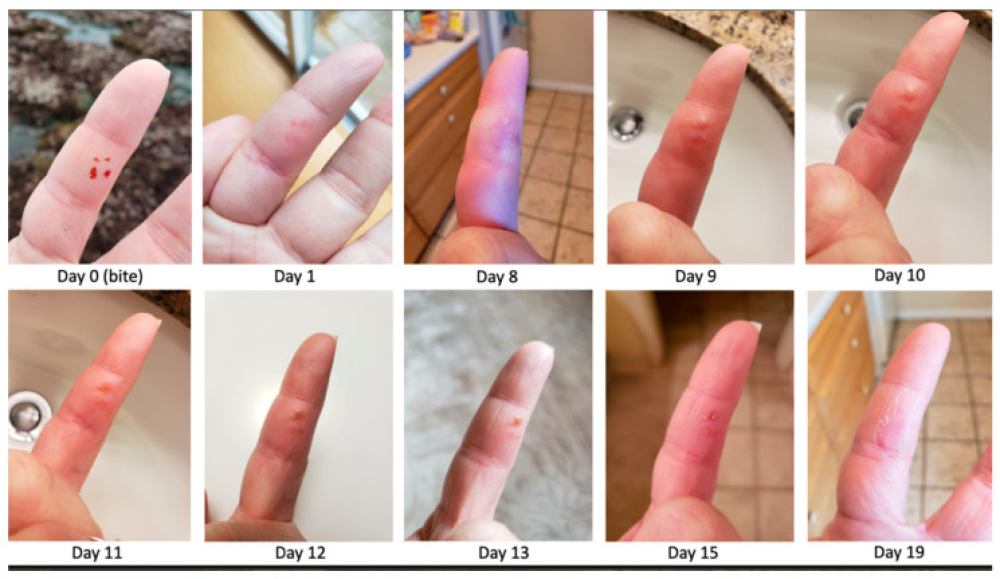Cross a bloodworm and you could be in for a nasty surprise. Stretching to 35 centimeters (14 inches) in length, their narrow bodies and fleshy-pink coloration might not make them look all that threatening, but their metal teeth tell a different story.
Bait diggers and fishers are the most likely to fall victim to the bloodworm’s bite, and reports from those who’ve experienced it don’t paint a pretty picture. It’s perhaps unsurprising considering that bloodworms can bite through the exoskeletons of their prey and inject venom to paralyze them. It’s even thought that their copper teeth may speed up the time it takes for the venom to kick in, acting as a catalyst for the chemical reaction.
Nasty as they must be, reports of human bites are relatively rare in the literature, but a 2022 case study in Toxins tells of the symptomatic envenoming experienced by a marine ecologist who was bitten while performing field research.
“She described the bite as feeling much like a ‘bee sting’ with pain, itching, and local anesthesia at the bite site for about a day, after which the puncture wounds closed and erythematous macules developed in their place,” it reads.

Time course of the bite with an acute envenoming syndrome (day 0 and day 1) followed by possible delayed venom reaction, infection, or combination of both (day 8) and resolution (e.g., days 9 through 19).
“On day 8, the patient sought medical consultation from the institution’s expedition physician as the affected digit was edematous and presented surprising discoloration and by the following morning was ‘very swollen, warm but not painful’ or tender but had pronounced vesicles at the puncture sites.”
Whether the reaction to the bite was driven by the venom, a secondary bacterial infection, or a combination of the two wasn’t exactly clear, but the authors say more bites need to be reported if we’re to better understand how bloodworm bites can affect human bitees.
Bloodworms are members of the genus Glycera, a group of polychaete worms, and are found in shallow marine environments. Impressively, their jaws are composed of 10 percent copper crystals, and are so hardy that a single set can last a lifetime, which for the bloodworm is up to five years. We can only assume Jaws the James Bond henchman’s metal gnashers were inspired by these wriggly beasties.
Metal is rare in the animal kingdom, largely because it’s not easy to come by in big quantities. Fortunately for the bloodworm, its sediment-lurking lifestyle means its able to absorb lots of copper from its environment, but still questions remained as to how it then worked these deposits into the jaw.
A 2022 paper got to the bottom of the mystery, revealing a multi-tasking protein that contributes to the worms’ metal teeth by carrying out an impressive set of six essential roles. Even more impressive when you consider its simple composition that’s mostly made up of glycine and a bit of histidine.
The resulting dentition is a set of four fearsome fangs built from copper that are used both for biting prey and fighting with rivals. Oh, and – of course – maiming the occasional field marine biologist.
Source Link: Bloodworms With Metal Teeth Are Real, And You Don’t Wanna Mess With Them